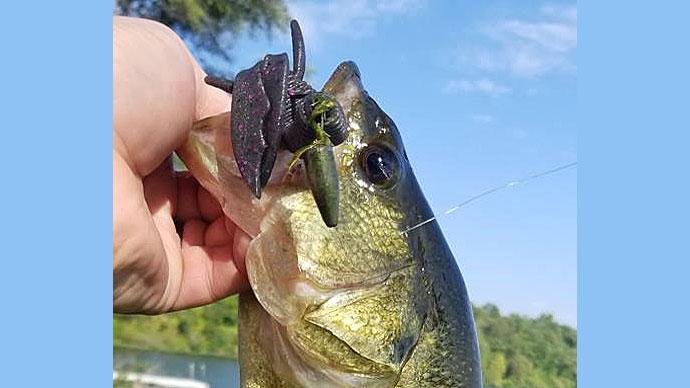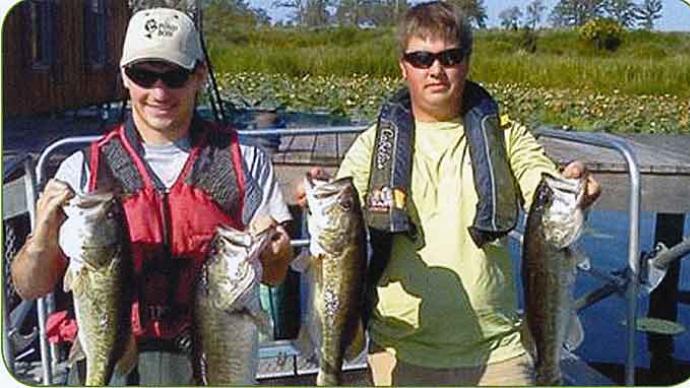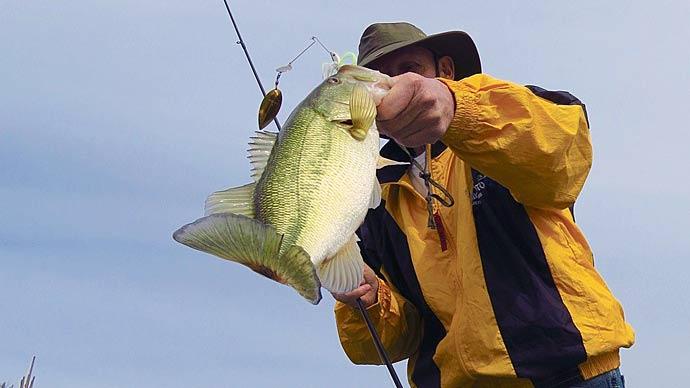
Pond owners and managers can find ourselves being quite passionate about our fish. In attempts to improve growth rates, we'll diversify genetic strains, and maybe even stock species that have little chance of reproducing, while also stocking at densities that exceed Mother Nature's intentions. When implementing innovative management strategies we don't always know what is resulting in better growth rates and what is not. One technique that can prove to be very helpful in your management process is to mark and identify individuals within the same species of fish. This information gives you the ability to tell different age classes apart, determine how a genetic strain or stock is doing, track individuals within your current stock, and if necessary, better understand population sizes and trends.
Many methods of marking fish are available, but none are likely to be as simple and easy as fin-clipping. Fin-clipping is one of the most basic and oldest methods of marking fish and is nearly as simple as it sounds. Ideally, one would use a pair of surgically sharp scissors, sterilized with alcohol, and clip part or the entire fin of a fish. Clipping the top corner or bottom corner of the caudal (tail) fin is a common method since the fish seem to recover well, and also because it is fairly easy to recognize these marked fish when they are recaptured. Another option is to clip a pelvic fin. When clipping pelvic fins, it is common to clip all of one of the fins. This method works well on largemouth bass and is not noticeable to the average person, yet easy to identify (and it doesn't bother the fish's ability to navigate or go about its normal life). It is possible to clip the pectoral fins, but my suggestion would be to avoid this, since most fish species use these fins for basic function and maneuverability. For Salmonids like rainbow trout, it is most common to clip the adipose fin, which is a small fin found between the dorsal and caudal fin. Of all the fins, this one is deemed the least valuable, and is the preferred fin to clip when applicable. Many species of fish lack this fin.

Once a fin is clipped, it is common for the area to become infected. To help minimize infection, make sure to use high quality sterile scissors and handle the fish carefully. As the fin heals, most fish species have the ability to regenerate the portion that was removed. Fortunately for identification, when regenerated, they typically grow back with a wavy/crooked look to them and can be identified fairly easily when knowing where to look.
One of the most important scenarios where pond owners should consider marking fish is prior to stocking a pond with predator fish. This will provide the ability to differentiate between several different stocks of fish. Clipping one of the two pelvic fins or either the top or bottom corner of the tail fin provides a decent number of opportunities to track different strains or generations of fish. For example, in year one you clip the left pelvic, in year two the top of the tail.
It is important to know that some studies look at fish mortality and growth rates on fish when clipped verses not clipped. Some of these studies suggest survival rates and growth rates can be negatively affected. In my experience, the age of the fish and the stress put on the fish when handled/clipped, along with the amount of forage fish present in the fish's environment play a role in survival. Fin-clipping juvenile fish (such as fingerlings) results in lower survival rates than clipping mature fish.
It is also important to remember this: when marking fish you should handle them when water temperatures are within their preferred range. For example, I would not suggest fin-clipping largemouth bass when water temperatures are lower than 55 degrees, especially if it is in the fall. The reason being bass' metabolism is slower and will remain slow for an extended period of time. As a result, if the fish is stressed or the fin becomes infected, that fish will have a more difficult time overcoming the process. During this time of stress, growth rates would likely be reduced. On the other hand, if the fish is in good condition, handled when temperatures are within desired limits, and is in an environment that provides plenty of forage, logic suggests success rates are likely to be higher.
Even though stress and mortality on marked fish can have a negative impact, the information gathered can be incredibly valuable. One of the most important things to understand is that marking your fish is only part of the process of managing the pond.

Don't lose sight of the need for a thriving forage base with limited predator fish. Marking and stocking more predator fish into a pond that is already predator-heavy will result in poor growth rates. As much as adding new genetics to a pond is exciting, genetics are likely one of the last things that is limiting predator growth. Be sure to have all aspects that relate to fish growth in check.
Practical for the average pond owner, fin clipping can be used to help determine how many individuals of a specific species are in your pond. However, to complete this type of study efficiently, it will typically require electrofishing a waterbody multiple times at an interval of 7-10 days apart. These types of studies are called Mark-Release-Recapture studies. As true with most fisheries studies, the size and depth of the waterbody along with the time of year will affect the outcome and possibly result in subjective data. If going this route, it is often best to complete the study over three-plus days since it will provide a more diverse data set than just going with a two-day study. Three or more days is considered a Multiple Census Study.
For the average person, this depth of management and information gathering is not feasible, but few methods of gathering population information are more practical. Mark-Release-Recapture studies will help determine the number offish in the pond and allow for more accurate management improvements. Fish growth is usually directly related to the availability of edible forage fish. Understanding the size of predator populations will greatly influence your ability to set creel goals and harvest enough fish to get your fishery on track for success without waiting a year or two to find out if you are on the right track.
Here's how we use fin-clipping. Say we decide to stock 50 new bass, 10-12" long, into our system. The stage is set, we have the forage fish and these new bass are being stocked to enhance the gene pool. We decide to finclip the left pelvic fin. Done. Next year, we decide to study their growth rates and determine how many bass we actually have. As we toss a lure and catch some fish, we look at those fins. When we see a crooked left pelvic fin, we know we've recaptured a fish stocked a year ago. Weigh and measure the fish, compare it to the average weight from the stocked fish and we can see how that fish is progressing. As the season goes on, say we catch 100 bass, total. Twenty of them have evidence of fin-clips. Comparing their weights and lengths to those originally stocked fish, we can get an idea how well they are performing.
Plus, since 20% of the fish we captured have clipped fins, we can begin to extrapolate how many bass we actually have, especially if that 20% is fairly constant. Since we stocked an additional 50 bass, and our catch rates suggest 20% are tagged, about how many mature bass do we have? 250.
Overall, fin clipping has several applications used from back yard ponds all the way up to large scale population studies in lakes. If the idea of fin clipping the fish in your pond to monitor their success sounds interesting, I strongly urge you to try it. It is not very complicated and can provide functional insight. The more you know about your fish, the more likely you are to reach your goals. Most pond owners who mark their fish tend to find enjoyment in the process and also learn something along the way!
David Beasley is the Lead Fisheries Biologist at SOLitude Lake Management, an environmental firm providing full service lake, pond, and fisheries management services throughout the Eastern United States. He can be reached through the website, www.solitudelakemanagement.com
Reprinted with permission from Pond Boss Magazine



